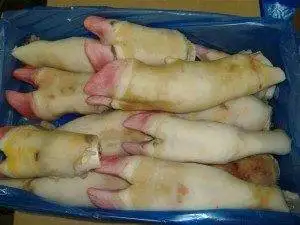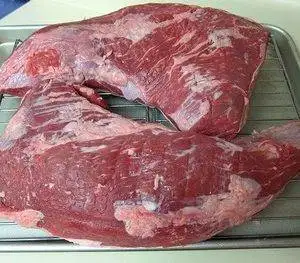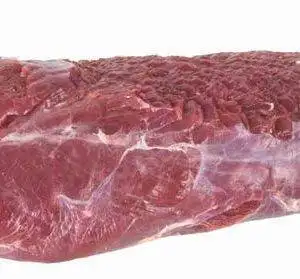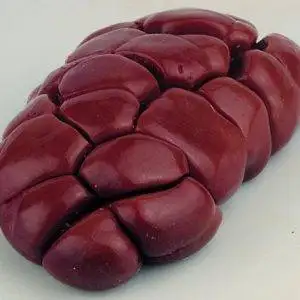Description
Frozen Cow Leg: Everything You Need to Know
Frozen cow leg is more than just another cut of beef—it’s a delicacy, a source of nutrition, and a cultural food icon. For many, it is not just meat; it represents tradition, celebration, and nourishment. To fully understand its importance, let’s break it down in greater detail.
1. The Anatomy of a Cow Leg
Cow leg comes from the lower limb of the cow, often including:
-
Skin (hide) – slightly tough but rich in collagen.
-
Tendons – elastic tissue, high in protein and gelatin.
-
Bones – containing bone marrow, calcium, and phosphorus.
-
Meat fibers – though minimal compared to regular beef cuts, provide flavor and texture.
👉 What makes it unique is the high collagen-to-meat ratio, which makes it chewy but very nutritious.
2. Why Frozen Instead of Fresh?
-
Extended Shelf Life – Fresh cow leg spoils within 48 hours if not refrigerated, while frozen lasts 6–12 months.
-
Global Trade – Freezing allows export to Africa, the Caribbean, and Asia.
-
Convenience – Frozen cow leg can be purchased in bulk and used as needed.
-
Nutrient Preservation – Freezing locks in vitamins and minerals.
3. Nutritional Breakdown (Expanded) Frozen Cow Leg
Here’s a closer look at what frozen cow leg offers:
| Nutrient | Function | Benefit |
|---|---|---|
| Protein | Builds and repairs tissues | Supports muscles and immune function |
| Collagen | Structural protein | Improves skin, hair, nails, and joints |
| Calcium | Bone health | Prevents osteoporosis |
| Iron | Oxygen transport in blood | Prevents anemia, boosts energy |
| Zinc | Enzyme function, immunity | Helps healing and immune defense |
| Magnesium | Nerve and muscle health | Improves sleep, reduces stress |
| Phosphorus | Cell repair, bone strength | Works with calcium for strong bones |
Frozen cow leg is considered a functional food—it nourishes and also provides therapeutic benefits.
4. Health Benefits in Detail Frozen Cow Leg
-
Joint & Cartilage Support
Collagen reduces inflammation and rebuilds cartilage, beneficial for arthritis patients. -
Gut Healing
Gelatin binds water in the digestive tract, improving bowel movement and reducing leaky gut issues. -
Anti-Aging Properties
Collagen slows down wrinkles and improves skin hydration. -
Post-Surgery & Recovery
Protein and collagen accelerate wound healing and tissue repair. -
Boost for Athletes
The amino acids in cow leg support muscle recovery and endurance.
5. Culinary Uses Around the World Frozen Cow Leg
-
Africa (Nigeria, Ghana, Cameroon): Cow leg is used in pepper soup, stews, and party delicacies.
-
Caribbean (Jamaica, Trinidad): Cow foot soup with beans, yam, and dumplings.
-
Asia (China, Vietnam): Beef tendon soups and hotpots.
-
Latin America: Cow leg broth is believed to strengthen the body.
👉 Each culture values cow leg not just for taste but also for its perceived healing and energizing powers.
6. How to Identify Quality Frozen Cow Leg
-
Texture: Should be firm, not mushy.
-
Color: Light brown to creamy, not greenish or dark black.
-
Packaging: Vacuum-sealed, with no ice crystals (sign of thaw/refreeze).
-
Odor: Should be neutral—strong odor means spoilage.
7. Cooking Techniques (Beyond Soups)
While soups and stews are most common, here are other ways to enjoy frozen cow leg:
-
Grilled Cow Leg (after slow boiling) – smoky, chewy, and flavorful.
-
Cow Leg in Curry Sauce – spiced with turmeric, ginger, and coconut milk.
-
Braised Cow Leg – slow-cooked with red wine or palm oil for richness.
-
Cow Leg Stock – simmered for hours to create collagen-rich broth.
8. Storage and Food Safety
-
Defrost in Fridge: Best to thaw overnight to maintain texture.
-
Avoid Re-freezing: Repeated thaw-freeze cycles damage texture and flavor.
-
Cook Immediately After Thawing: Prevents bacterial growth.
-
Use Small Portions: Freeze in meal-sized packs to avoid waste.
9. Frozen Cow Leg in the Market
-
Wholesale Trade: Exported in bulk from Brazil, India, and Australia to Africa/Asia.
-
Retail Packaging: Usually cut into small pieces (1–2 kg packs).
-
Pricing: Generally cheaper than lean beef cuts due to being a “by-product,” but highly valued in ethnic markets.
10. Myths & Misconceptions
-
“Cow leg has no meat, only bone.”
False – it contains tendons, skin, and marrow, all rich in nutrients. -
“Frozen meat is less nutritious than fresh.”
False – if frozen properly, nutrients are preserved. -
“It’s only for the poor.”
False – in many cultures, cow leg is a luxury item for special occasions.
11. Environmental & Ethical Considerations
-
Sustainability: Using cow leg reduces food waste since no part of the animal goes unused.
-
Affordability: Provides affordable protein to low-income families.
-
Cultural Respect: In many communities, it is served as a gesture of honor and hospitality.
12. Expert Cooking Tip
👉 Pressure Cooking + Seasoning = Best Results
-
First, pressure cook with ginger, garlic, and onions to soften.
-
Then finish in a stew, soup, or sauce to absorb flavors.
Expanded FAQs
Q1: Does cow leg have cholesterol?
Yes, like all animal products, it contains cholesterol, but moderate consumption is safe for most people.
Q2: Can children eat cow leg?
Yes, it is safe and provides calcium, protein, and collagen, which support growth.
Q3: Is cow leg good for pregnant women?
Yes, it supports bone health, immunity, and tissue repair. Always ensure it’s well-cooked to avoid infections.
Q4: Why is cow leg chewy?
Because of the high collagen content. Proper slow cooking softens it into a gelatinous texture.
Q5: Can cow leg broth replace bone broth?
Yes, in fact, cow leg broth is considered richer in gelatin than standard bone broth.






Reviews
There are no reviews yet.